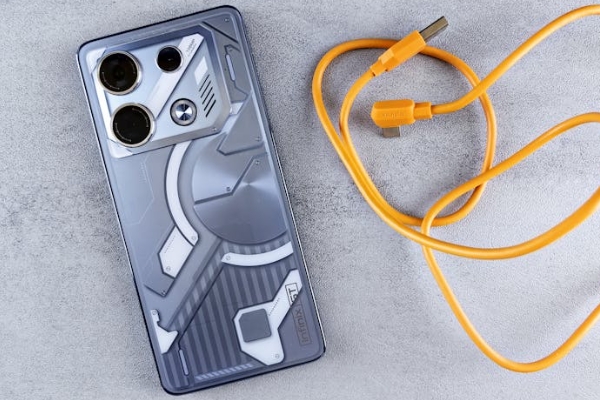The charging industry has come a long way from bulky adapters and tangled wires. Today, new materials and cutting-edge technologies are revolutionizing how chargers are designed and used.
How are new materials and technologies transforming chargers?
From Gallium Nitride (GaN) to AI-powered charging algorithms, innovations are making chargers faster, safer, and more compact. This shift is reshaping the landscape of mobile accessories.
Let’s dive into how these advancements are shaping the future of chargers.
Why Are New Materials Like GaN a Game-Changer?
Gallium Nitride (GaN) is replacing traditional silicon in charger components, offering numerous benefits.
Snippet Insight:
GaN chargers are smaller, faster, and more efficient, handling higher power outputs with less heat production.

Advantages of GaN Technology
- Compact Size: GaN chargers are up to 50% smaller than silicon-based chargers.
- High Efficiency: They lose less energy as heat, improving charging efficiency.
- Higher Power: Capable of supporting fast charging for high-wattage devices like laptops.
GaN is paving the way for ultra-portable chargers that don’t compromise on performance.
How Are AI and Smart Algorithms Enhancing Safety?
Artificial intelligence and smart algorithms are redefining charger safety and efficiency.
Snippet Insight:
AI-powered chargers can adjust voltage and current based on the connected device, optimizing performance and prolonging battery life.

Key Benefits of AI in Chargers
- Device Detection: Identifies the specific requirements of your device for optimized charging.
- Heat Management: Prevents overheating by dynamically adjusting power output.
- Battery Health: Extends battery lifespan with adaptive charging cycles.
These technologies create smarter, more intuitive chargers for a wide range of devices.
Can Recyclable and Biodegradable Materials Change the Game?
The use of sustainable materials in chargers is addressing environmental concerns.
Snippet Insight:
Recyclable plastics and biodegradable components are reducing e-waste, making chargers more eco-friendly.
Driving Sustainability in Chargers
- Recycled Plastics: Made from post-consumer waste, reducing reliance on virgin materials.
- Biodegradable Parts: Components designed to decompose naturally, minimizing long-term environmental impact.
- Modular Designs: Chargers built for easy repair and recycling to extend product lifespan.
Sustainable design is becoming a core focus in the charging industry.
How Does Wireless Technology Fit Into This Evolution?
Wireless charging is a revolutionary application of technology in the charging space.
Snippet Insight:
Wireless chargers eliminate cables and improve convenience, with advancements in speed and distance charging on the horizon.

Challenges and Opportunities in Wireless Charging
- Speed Improvements: Faster wireless charging solutions are closing the gap with wired options.
- Distance Charging: Emerging technologies promise to charge devices from several feet away.
- Compatibility: Efforts to standardize wireless protocols like Qi are enhancing cross-device usability.
Wireless technology represents the future of seamless, cable-free charging experiences.
Conclusion
The integration of new materials like GaN, smart algorithms, sustainable components, and wireless technology is reshaping charger products. These innovations promise a future where chargers are smaller, faster, safer, and greener.
At FUMEI, we’re dedicated to bringing reliable, technology-driven charging solutions to the world—connecting every device with ease and efficiency.
